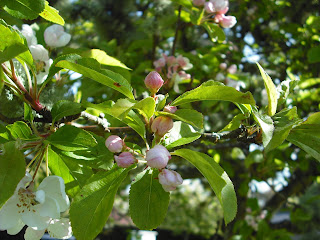http://www.ancient-tree-hunt.org.uk/
I've recorded trees before, whilst working as a seasonal ranger. And after spending a rainy Sunday at the Royal Botanic Gardens Edinburgh, collecting data for tree surveys for college work, I added two of the biggest sweet chestnuts there to the database.
One is by the pond, with nesting birds in holes and a great stag-headed quality to most of the larger branches.
The other, perhaps more noticeable, is the big old tree standing on the corner of the rock garden - right alongside a well-travelled path from the East Gate down to the south. This one lost one of three large limbs during recent storms, and has a huge wound that looks great - it tells a story and gives an indication of the tree's life history. I hope that at least some people stop and think twice about this tree - about how it is a living being far older than any person in the world, about what it has 'seen' in its life and about what it means to preserve trees like these.


+(5).JPG)
+(1).JPG)
+(2).JPG)






















